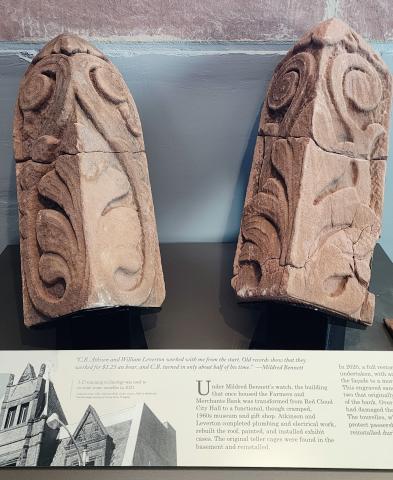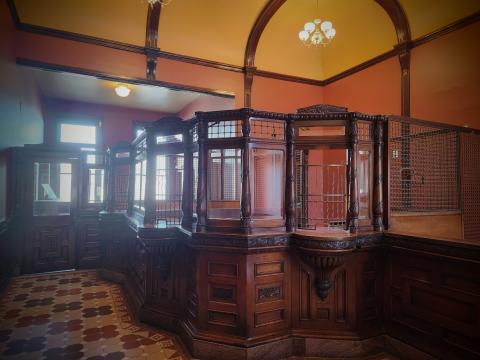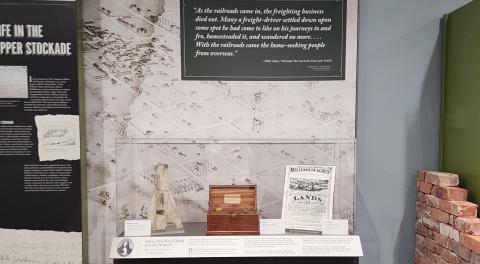


Making a Place Exhibit Opening!
338 N. Webster St.
Red Cloud, NE 68970
United States
We are excited to welcome guests to the opening of our newest permanent exhibit, Making a Place: A Long History of Red Cloud, on March 1, 2024! As we celebrate Nebraska's Statehood Day, we hope you will join us to dig into the history of the Red Cloud area, from its earliest inhabitants to today. The exhibit will be open free of charge from 3:00 pm. to 6:00 p.m., with light refreshments served.
Making a Place: A Long History of Red Cloud invites visitors to explore Willa Cather's novel A Lost Lady through topics that are both present and absent in Cather's fiction. The exhibit includes Pawnee culture; Silas and Lyra Garber—in life and as portrayed as Captain and Mrs. Forrester in A Lost Lady; town-making and homesteading; banking and the Panic of 1893; and early preservation efforts led by the National Willa Cather Center's founder, Mildred Bennett.
One of Red Cloud’s most arresting architectural specimens, the Farmers and Merchants Bank was built by Red Cloud’s founder, Silas Garber, who went on to serve two terms as Nebraska’s governor. Cather became acquainted with Lyra and Silas Garber during her childhood in Red Cloud and used them as prototypes for Captain and Mrs. Forrester in A Lost Lady. The bank is used in two of Cather's other writings: the short story "Two Friends," and the novel Lucy Gayheart.
The bank is also the first building owned and operated as a museum by the National Willa Cather Center, known then as the Willa Cather Pioneer Memorial. This building is a fitting place to explore the notions of place-making and the history of Red Cloud’s founding, as well as the early days of the Willa Cather Pioneer Memorial. For more than sixty years, the WCPM, which has grown and evolved into the National Willa Cather Center today, has worked to preserve the historic fabric of the town that Willa Cather immortalized in her fiction, nonfiction, and poetry.
We regret that this exhibit is not presently accessible to all, but will be via elevator upon completion of the adjacent Hotel Garber later in 2024.
Thank You to Our Exhibit Sponsors!
- Pinnacle Bank and the Dinsdale Family
- Cooperative Producers, Inc.
- B. Keith and Norma F. Heuermann Foundation
- Rick and Kay Stahly In Memory of Doris Hunter
- Susan Parry
- Jennifer J. Hein
- Mark Howe
- Tru-Built Construction
- Heritage Bank
- Michael Sirmons
- Linda and Mark Robison


